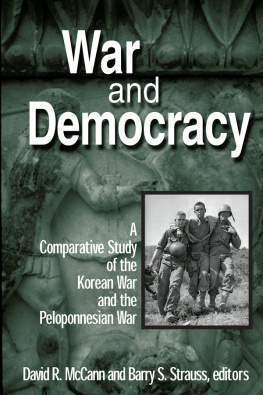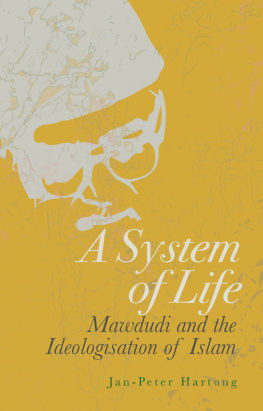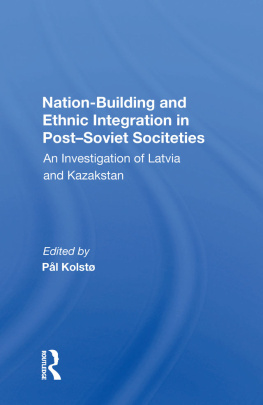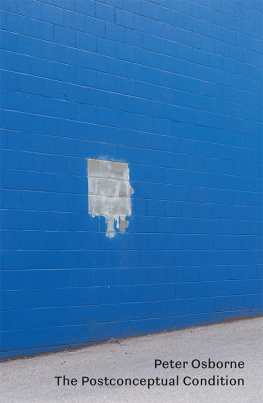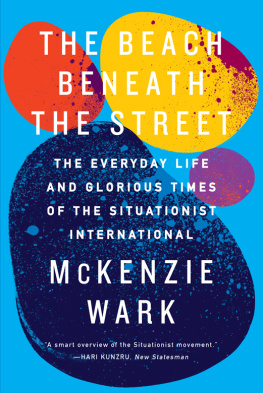First published 1998, with support from the foundation Ny Carlsbergfondet, by Ashgate Publishing
Reissued 2018 by Routledge
2 Park Square, Milton Park, Abingdon, Oxon OX14 4RN
711 Third Avenue, New York, NY 10017, USA
Routledge is an imprint of the Taylor & Francis Group, an informa business
Text copyright Peter Shield 1998
Illustrations and excerpts from Asger Jorns writings copyright The Asger Jorn Estate, 1998; copyright Silkeborg Kunstmuseum
The author has asserted his moral right.
All rights reserved. No part of this book may be reprinted or reproduced or utilised in any form or by any electronic, mechanical, or other means, now known or hereafter invented, including photocopying and recording, or in any information storage or retrieval system, without permission in writing from the publishers.
Notice:
Product or corporate names may be trademarks or registered trademarks, and are used only for identification and explanation without intent to infringe.
Publishers Note
The publisher has gone to great lengths to ensure the quality of this reprint but points out that some imperfections in the original copies may be apparent.
Disclaimer
The publisher has made every effort to trace copyright holders and welcomes correspondence from those they have been unable to contact.
A Library of Congress record exists under LC control number: 97017020
Typeset in Palatino by Photoprint, Torquay, Devon
ISBN 13: 978-1-138-32842-6 (hbk)
ISBN 13: 978-1-138-34847-1 (pbk)
ISBN 13: 978-0-449-44866-9 (ebk)
Frontispiece: Asger Jorn in 1963 holding a copy of The Order of Nature
(Photo: Borge Venge)
When I set out to write this book on the ideas of the prominent Danish artist Asger Jorn, I intended only to pick out the main philosophical threads in his astonishing attempt, which anticipated much of European thinking in the late 1960s and early 1970s, to rewrite philosophy from the viewpoint of an artist. For a while his complex and often obscure and wilful texts defeated me and then I found myself gradually sucked into a process of tracing the hidden side of dialogues that Jorn carried on with innumerable other thinkers and the relationship of his writings to the circumstances of his life. The result presented here is thus a hybrid, an intertextual account of the philosophy combined with an intellectual biography of Jorn in the early 1960s, the period in which these ideas were mainly committed to paper.
Whilst Asger Jorn is recognized as a major artist of the third quarter of the twentieth century, little is known of his theoretical writings outside Denmark except for a few texts written in French for the Situationist International movement, which, interesting as they are, do not give an adequate picture of his ideas.
It would have been relatively easy to translate the main texts of Jorns discourse and let readers find their own way. However, many of Jorns points of reference in the cultural life of Scandinavia are practically unknown in the English-speaking world, and this is a significant obstacle. Unlike earlier periods, almost all Jorns writings from 1961-67, when he attempted this first complete revision of the existing philosophical system, have been published, mostly in Danish but with some texts in German and French, and many are still in print and thus available, in principle, to other scholars or anyone else who would like to explore the subject further.
However, that the main texts are available only in Danish does create a difficulty of presentation. It is one thing to produce a reasoned introduction to a writers ideas when these are available in one or more of the major languages and can thus be easily checked. It is quite another when one has to present the work in extract and summary as the only available version in English, and, at the same time, attempt a balanced view of the ideas expressed. That I have had to include Jorns ideas in more detail than usual has meant that the book may have a certain schizoid flavour as I move back and forth between setting out Jorns arguments as clearly as possible and a personal exegesis of them. It also poses other difficulties. For example, Jorn was a wilful and willing transgressor of any accepted mode of thinking and, by trying to give this its due without too much intervention, I risk the accusation of either being unaware of these transgressions or of failing to prepare the reader. On the other hand, because of the readers relative lack of opportunity to check my chosen selections, there could be the suspicion that, consciously or unconsciously, I have manipulated them to suit my arguments. I myself feel that my work here is only a start upon the elucidation of Jorns ideas and if other writers can produce refutations or alternatives, so much the better. Jorn himself would certainly have approved of such an attitude.
This study of Asger Jorns philosophical writings of the early 1960s is part of a wider programme of research into his life and works. Troels Andersen, the director of Silkeborg Art Museum, which houses Jorns art collection and archives, has already completed one volume of a biography, and is now turning his attention to the succeeding decade. In order not to repeat the latters pioneering work amongst mainly unpublished texts, I have inevitably referred a great deal to his book for the earlier preconditions of my own area of study, and, ideally, that book should be read in advance of any foray into the territory I am exploring here. Among other things, this would demonstrate that, whilst my gratitude for Graham Birtwistles friendly advice and help and my admiration for his work are unbounded, my interpretations of his findings are my own and should not be laid at his door.
Although the period covered by this study is quite short, the scope of the material examined is enormous. In the three or four years after Jorn left the Situationist International in 1961, he undertook a series of philosophical investigations that reflected his dissatisfaction with both dialectical materialism and the complementarity of the Copenhagen Interpretation. This led to the formulation of triolectics, a way of representing natural thinking. Triolectics is a synthesis of Peircean triads, complementarity, dialectics and much more. As a device, it is ideally suited to the artistic imagination as it permits an endless transformation of concepts by analogy and correspondence. With this structure at the centre, Jorns philosophy ranges over the place of artistic value and a creative elite in economics, the essential cultural divisions of Europe, human evolution and the male-female relationship, and an evolutionary theory of art. All these and many other concerns are an attempt to describe a natural order as opposed to a classical ordering, a natural means of expression rather than an artificial classification.
My study of this philosophical structure is in three parts and commences with a section outlining Jorns preconditions and his progress towards a definition of the natural order. The next section comprises the development of the major concepts within this natural order, and the final part outlines Jorns use of his revision as a personal strategy. The fifteen colour illustrations of Jorns paintings in part illustrate points in the text and in part provide a complementary overview of his artistic work of the late 1950s and early 1960s.



